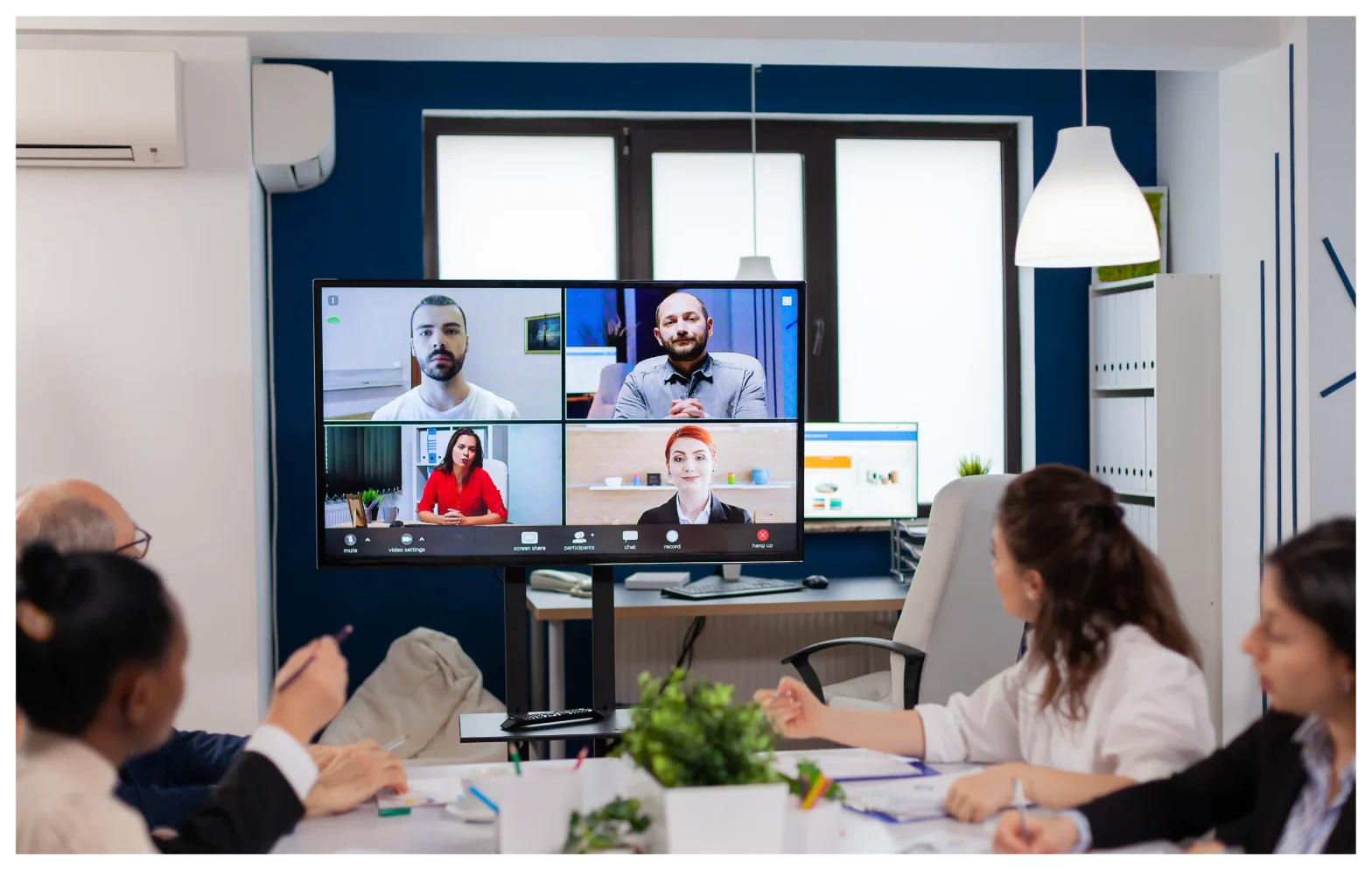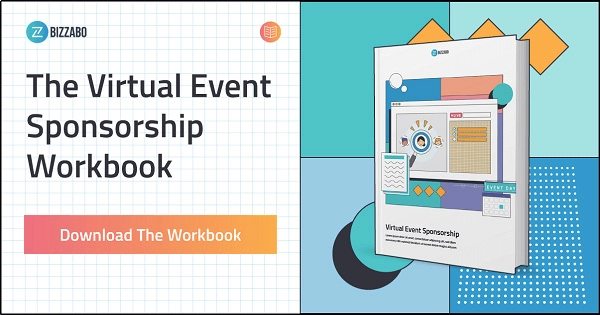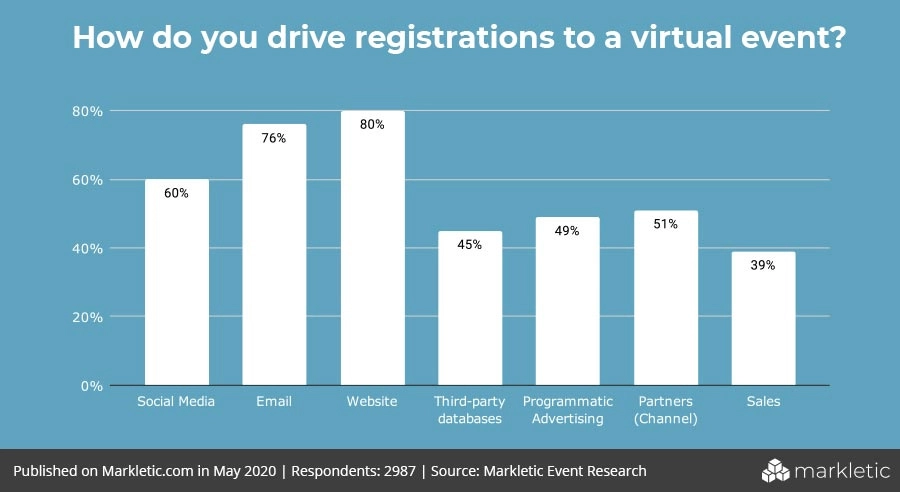
Introduction
In 2020, the Covid-19 pandemic caused a major disruption in the way companies interact with their target audiences. Face-to-face meetings were replaced by virtual meetings. Due to travel restrictions and social distancing requirements, on-site marketing events such as meetings and conferences were canceled and replaced with virtual events.
The number of businesses that organized virtual events doubled in 2020 alone due to the pandemic. The Post Covid-19 Event Outlook Report shows that up to 93% of event organizers have plans to invest in virtual events going forward.
But, unlike other online events like webinars and conferences, the collaborative nature of virtual summits enables companies to bring leading experts together to deliver presentations to attendees. In most instances, summit hosts ask presenters questions and attendees participate actively in the summit by asking questions.
This has made virtual summits highly effective online tools for B2B lead generation. When planned well, these events can offer numerous benefits to companies. They attract a huge number of attendees who desire to learn from industry experts. This presents B2B hosts the unique opportunity of capturing the attention of thousands of prospects without incurring high costs and being exposed to the risk of hosting a physical event.
But, running a successful virtual summit is not as easy as it sounds. In this article, we show you how to effectively produce virtual summits in 2021:
Step 1: Start With the Basics
The secret to succeeding in virtual events is to kick off the planning process as soon as you decide to host an event. In your planning, start with the general stuff.There are two main decisions you’ll need to make early in the planning phase:
- Will you use the Live Event or Recorded Event Approach?
Hosting a live event involves conducting interviews or presentations during the summit. On the other hand, a recorded event means that speakers are recorded ahead of the event and the recordings are played during the event. Each approach has its pros and cons. However, live events are prone to more risks and require extra effort to coordinate. Even so, they provide better engagement opportunities since attendees get a change to ask questions and receive responses real time. This is critical particularly in driving sales.
- What will it Cost you to Host a Virtual Event?
As you start planning the virtual event, you’ll need to consider the expenses that go with it ahead of time. While you may not necessarily incur these costs, you could consider expenses relating to copywriting services required to create the landing page and sales copies you need to attract attendees. If you plan to develop workbooks for the summit, include that cost here. Workbooks can boost event sign ups significantly – so consider having them in your virtual summits.
Another critical expense to consider relates to the design on online pages. Getting your virtual summit web pages designed by a professional is critical because you’re able to maintain a consistent brand. Attendees will be attracted to your event when you give them an appealing first impression.
To produce an effective virtual event, you’ll need to spend on partnerships through affiliate commissions. Though you may not pay the speakers you bring to the virtual summit directly, you need to allocate resources for back end commissions. In most instances, the partners you bring onboard will earn a percentage of the sales revenue they generate. If you have no way of getting partners, it’s prudent to budget for a recruiter fee.

- Which Tech Tools do you need to Host the Virtual Summit?
Determine the technology you need to promote and run your virtual event in advance and know the administrative or technology costs that you’ll require. Some areas where you’ll need technology include email marketing, landing pages, and checkout cart. There are numerous tech tools available in the market, explore them and identify those that suit your needs.
Step 2: Craft a Plan for Producing the Virtual Summit
When you decide to produce a virtual summit, you need to develop a plan to guide you through the process. Ideally, plan to take four to six months before you can hold the event. As a general rule, give yourself double the time you think you’ll have it ready.
In the planning stage, ensure that you determine the following:
- The dates when the virtual summit will take place
- The niche or topics that the summit will focus on
- The technology that will be used to deliver the summit
- Whether the summit will be live or pre-recorded
- The main offer you’ll be making during the virtual summit
Gaining clarity on these issues will enable you to determine the kind of speakers you need to bring on board and identify the promotional or affiliate partners you’ll need to work with. You’ll also need to determine the kind of promotional assets you’ll need to develop to market the event during this stage. These may include landing pages, e-mails, interesting blog or video content, eBooks, workbooks, banners and promotional products.

Source: Bizzabo
You may also produce additional copies for use by promotional partners and event speakers depending on their needs.
Step 3: Find Speakers for the Virtual Summit
You’ll need to identify and find speakers for your virtual summit at least three months to the event if you’re keen on producing an effective event. This means that you’ll need to work on this alongside the activities set out in step two above. Your goal in this stage is to onboard event speakers and partners – which can take up to two months.
Consider following the following process to ensure that you get the right speakers for your virtual summit:
- Build a List: Start by developing a list of the industry leaders you wish to bring to the event and justify why you think you need to involve them. Add basic information about each person as you build the list.
- Scrub your List: Once you have compiled the list with every potential speaker, review it to see who is most suitable to speak in your virtual summit. Do some background research about those individuals by visiting their social media pages, websites and any other outlets where they’ve published. The idea here is to learn as much as you can about them and what they do in the industry.
This process will enable you to determine which prospects you’ll need to contact. It’s advisable to opt for people who are easy to recognize due to the contributions they make in the industry through publications or podcasts. When you identify high priority speakers, consider engaging them through other mediums such as social media before you ask them to be part of the event.
- Conduct Outreaches: Reach out to every other person that you had on your initial list. Customize the emails that you send to them. Pique their interest by communicating the basic details of the virtual summit and encourage them to reach out to you for further details if they’re interested.
- Manage Communication: Once you request people to speak in your event and they respond positively, manage your communication with them. The best way to do this is to maintain contact with them periodically as the event draws near. Don’t make the mistake of signing people up as speakers then waiting until the day before the event to contact them. If you do this, you run the risk of losing them to other commitments. Maintaining regular contact will ensure that you remain on the mind of each person that you’ve chosen to speak in your virtual summit.
Step 4: Promote the Event
A virtual summit will not be effective if the host company does not promote it. The purpose of promoting the event is to attract your target audience and get them to sign up. The best time to roll our pre-event promotion activities is two to three weeks to the event. By this time, you need to have confirmed your speakers and prepared an event landing page. Ideally, your landing page should have a preview of your speakers, a clear take away for attendees and a strong call-to-action. See how JDOTMedia hacked this tip in the image below:
Since the B2B buying journey is more complex, your promotion efforts should target decision makers. Provide a lead magnet on your landing page to enable people to sign up for the virtual summit. There are several strategies that B2B firms can use to promote their event landing pages including event speakers, social media, emails, websites, the contact list you developed in step three above, and paid traffic. Statistics show that emails and websites are more effective at driving virtual event registrations at 76% and 80% respectively.

Source: Markletic
Step 5: Run Your Virtual Summit
As the date of your virtual summit approaches, connect with everyone who has registered. The best time to do this is during the week leading up to the event and also during the event. Each day, send an email with reminders, previews and a clear schedule of all speakers to them. This will make it easy for them to attend sessions that they wish to listen to.
As you engage your audience, ensure that you’re keeping your virtual summit speakers well-informed and happy as well. The best way to achieve this is to send them simple, yet clear directions to keep them from feeling frustrated or confused. Open and close the event with a keynote address. If you are offering your audience all access passes or wish to pitch something, include it in your opening keynote address when attendees are excited and engaged.
If you choose to deliver a recorded virtual event, ensure that making your keynote address live. This will enhance the engagement of your audience.
Final Thoughts
Virtual summits have gained traction in recent years as they provide B2B companies a unique opportunity to position themselves as industry leaders and generate quality leads. If you decide to produce a virtual summit in 2021, make it effective by following the five steps discussed above.
Our blog
Latest blog posts
Tool and strategies modern teams need to help their companies grow.

Video has emerged as one of the most effective tools to cut through the noise and con...

The way B2B buyers research, engage, and decide has changed and so must the way marke...

Channel marketing helps B2B companies grow by partnering with third-party sellers. It...






